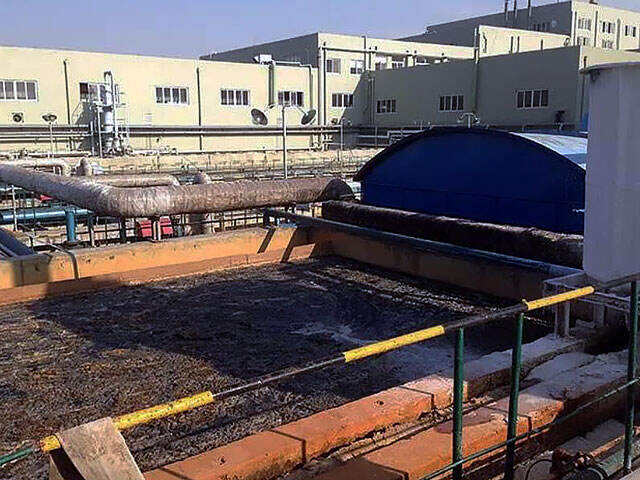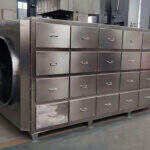What is sludge dewatering and concentration process?
Sludge dewatering and concentration is a common method for wastewater
treatment that separates water and solid components in sewage to reduce
the volume of wastewater discharged and improve treatment efficiency.
However, large amounts of waste gas are also generated during the sludge
dewatering and concentration process. These waste gases contain a
significant amount of organic substances and other pollutants that can
have adverse effects on the environment and human health. Therefore, it
is important to effectively treat the waste gas generated after sludge
dewatering and concentration. This article will introduce the scheme and
working principle of using a scrubber tower for waste gas treatment after
sludge dewatering and concentration.

What is scrubber tower?
A scrubber tower is a common type of air pollution control equipment that
uses liquid spraying to absorb pollutants from waste gas and achieve
purification. In the treatment of waste gas generated after sludge
dewatering and concentration, a scrubber tower can be used to absorb
organic substances and other pollutants from the waste gas into a
solution to achieve purification.
How does scrubber tower work?
Specifically, after sludge dewatering and concentration, the waste gas
is first introduced into the scrubber tower through an exhaust pipe. Then,
the scrubber tower is equipped with spray nozzles that spray the solution
into the waste gas to dissolve the pollutants into the solution. After
multiple spraying and absorption cycles, the pollutants in the waste gas
will be completely absorbed into the solution. Finally, the treated gas
is discharged into the atmosphere through an outlet pipe, achieving the
purification effect.

The working principle of a scrubber tower is to use liquid spraying to
absorb pollutants from waste gas and achieve purification. The spray
tower is equipped with spray nozzles that spray the solution into the
waste gas to dissolve the pollutants into the solution. After multiple
spraying and absorption cycles, the pollutants in the waste gas will be
completely absorbed into the solution. The purification effect of the
scrubber tower depends on factors such as the type of solution, spraying
rate, waste gas flow rate, and pollutant concentration.
Why use a scrubber tower to treat waste gas
Using a scrubber tower for waste gas treatment after sludge dewatering and concentration has the following advantages:
First, scrubber towers have high treatment efficiency. The spray nozzles in the tower can fully spray the solution into the waste gas, allowing pollutants to be fully absorbed into the solution. Moreover, by increasing the spraying frequency and volume, the treatment efficiency of the scrubber tower can be further improved.
Second, scrubber towers have low maintenance costs. The structure of the scrubber tower is relatively simple and does not require complex mechanical equipment or highly skilled maintenance personnel. Additionally, the pollutants in the solution can be treated by chemical methods, reducing waste production and further reducing maintenance costs.
Finally, scrubber towers have good adaptability. Since the types of pollutants in the waste gas generated after sludge dewatering and concentration are diverse, using different types of solutions can target different types of pollutants for treatment. Therefore, using a scrubber tower for waste gas treatment after sludge dewatering and concentration has good adaptability.
In conclusion, using a scrubber tower for waste gas treatment after sludge dewatering and concentration is an efficient, low-cost, and adaptable treatment method. Through the spraying and absorption of the scrubber tower, pollutants in waste gas can be effectively absorbed into the solution, achieving the purification effect. By considering the advantages of scrubber towers, this method has great potential in practical applications.





